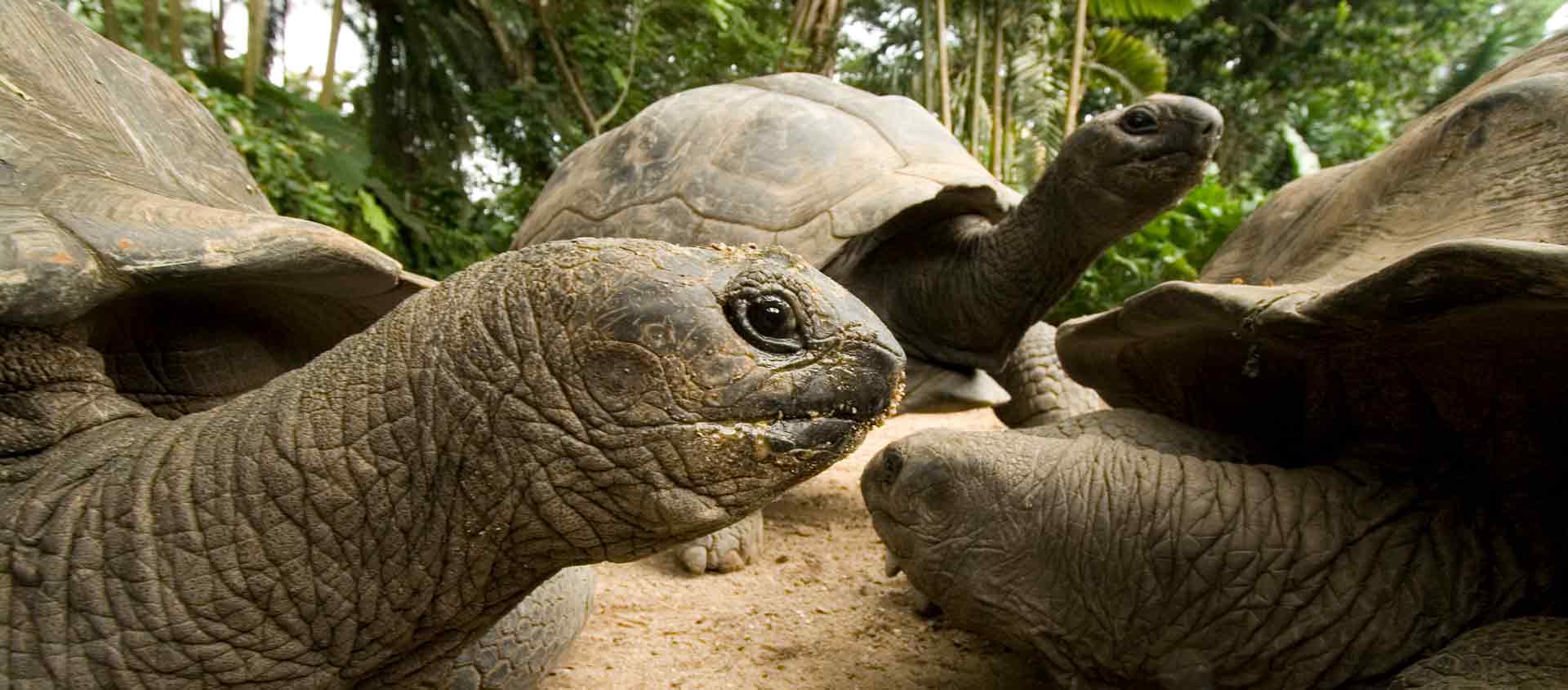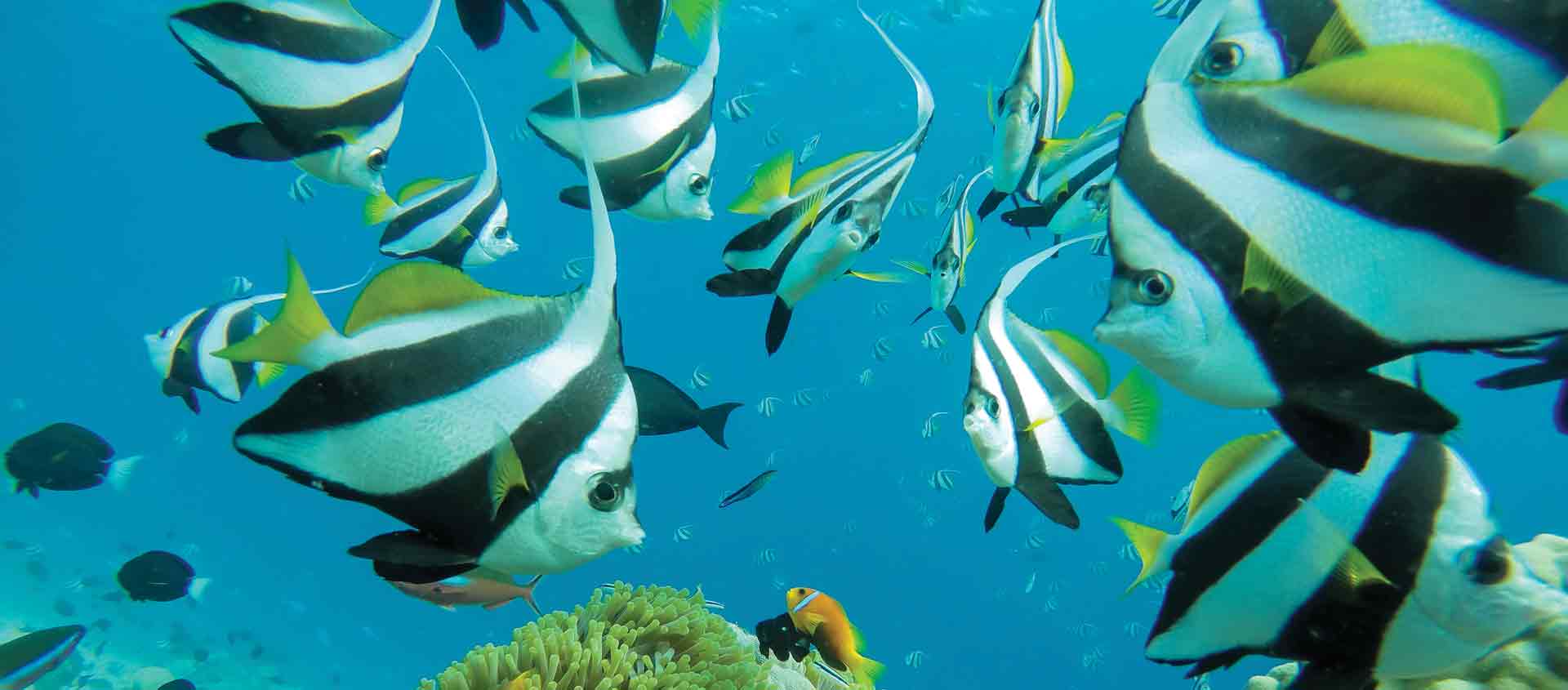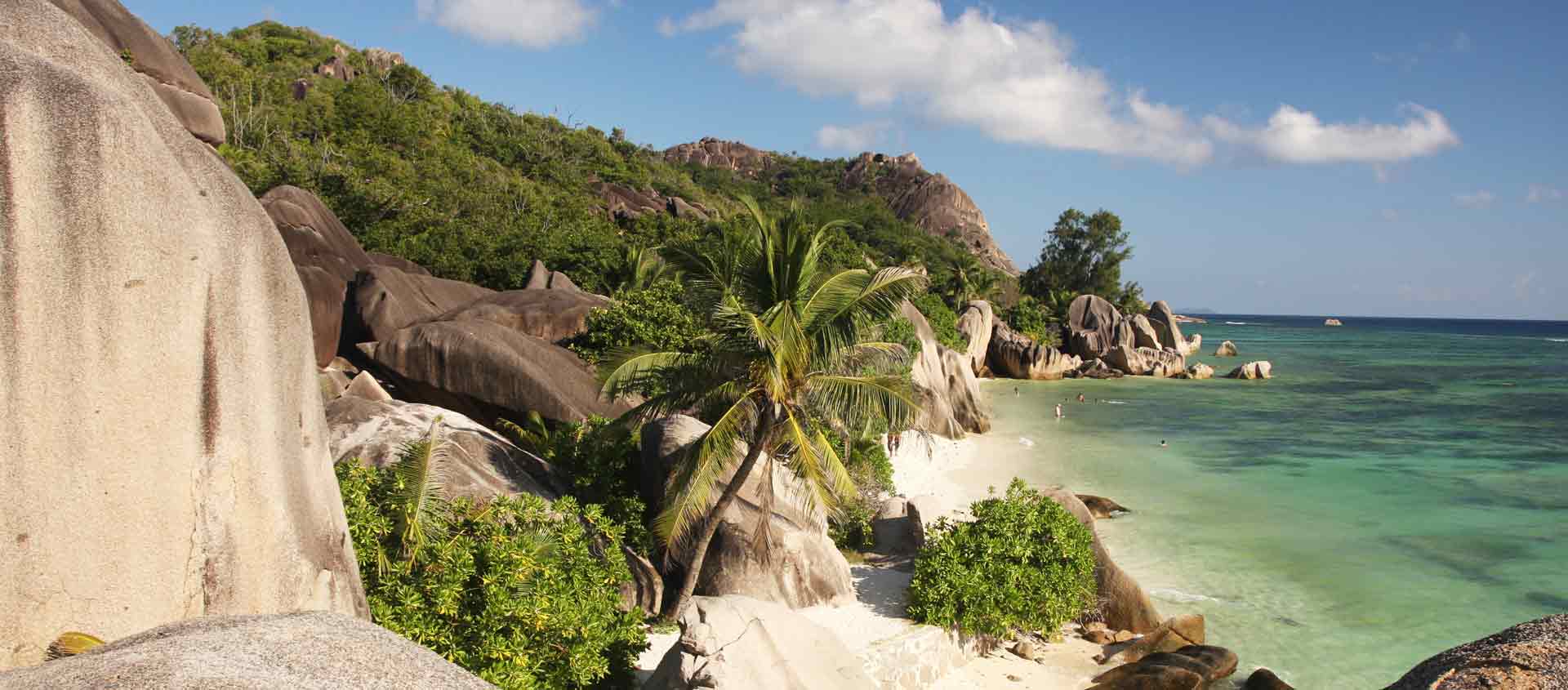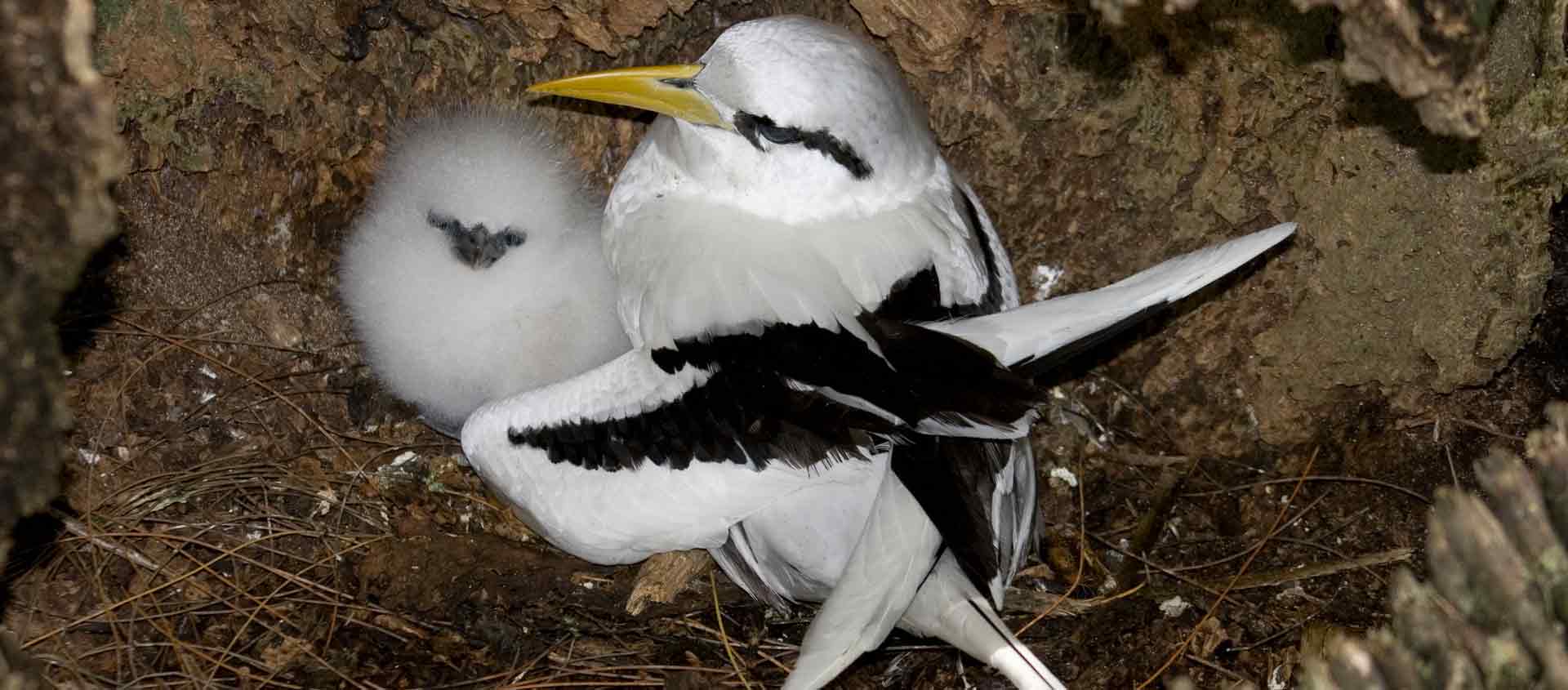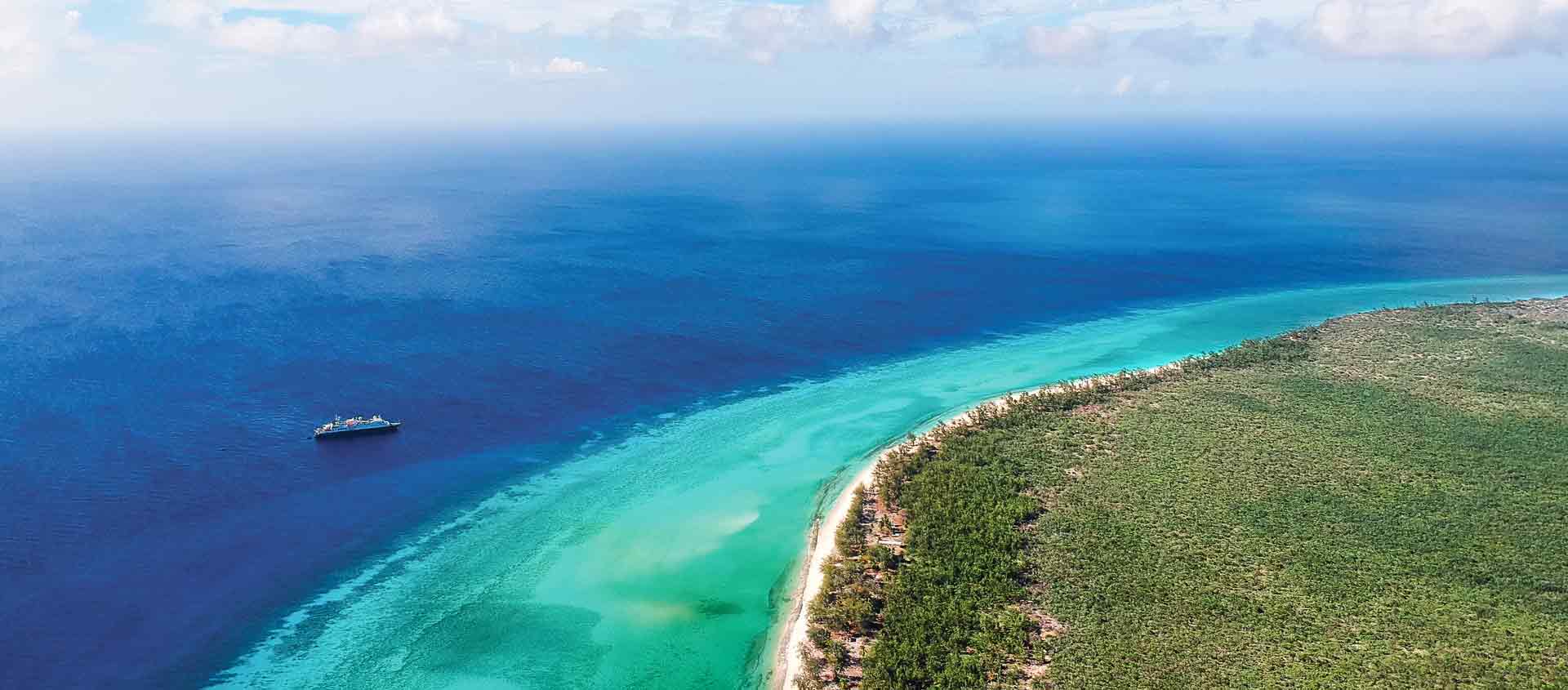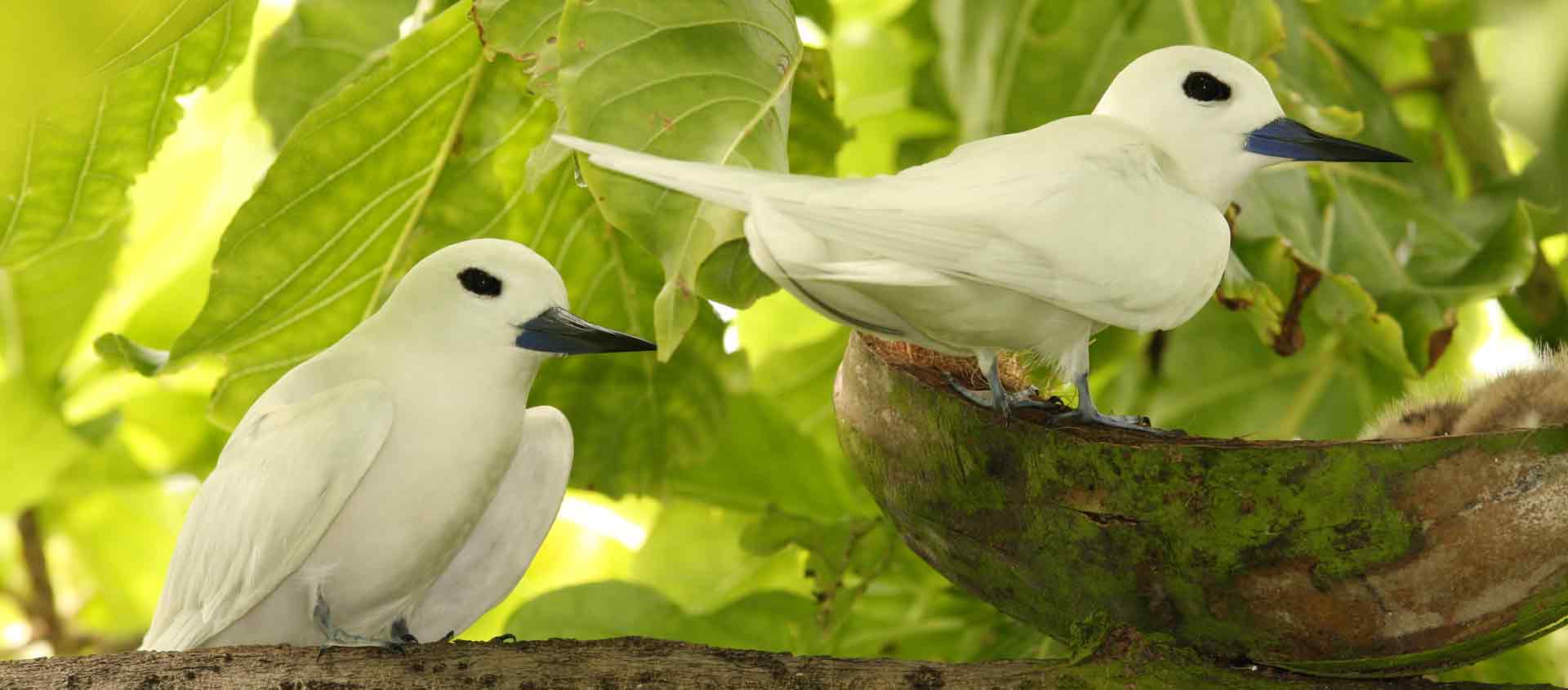Seychelles
onboard Silver Explorer
Seychelles Islands Cruise
Scattered across 700 miles of ocean, east of Tanzania and north of Madagascar, is an archipelago so exquisite, early explorers believed they had found the Garden of Eden. Indeed, Mother Nature was generous with the Seychelles—it holds within its pristine beaches, majestic cliffs, palm-fringed shores and cerulean waters a staggering diversity of life. This 13-day Seychelles cruise starts on the island of Zanzibar and crosses the Indian Ocean to unthinkably isolated outer atolls to the Seychelles’ inner granitic islands. Swim with rainbow-hued fish, gaze at seabirds hovering overhead, get up-close with the endemic Aldabra Giant Tortoise and stand beneath the mythical Coco de Mer, once thought to be the fruit of the Tree of Knowledge. Join Apex for this epic Seychelles Islands cruise.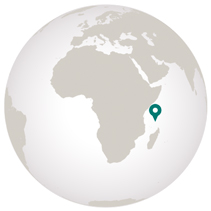
Destinations
- Travel by Air
- Travel by Road
- Travel by Boat
- Travel by Bullet Train
- Travel by Rail
- Travel by Dog Sled
-
Friday, April 15: Arrive Zanzibar, Tanzania
Arrive on this iconic Indian Ocean island, just 22 miles off the coast of Tanzania. The equatorial sun and intoxicating scent of spices will hit you as soon as you step off the plane. Drive past swathes of palm-fringed white-sand beaches on your way into Zanzibar Town, noting the mix of African, Arabian, and Indian architectural influences. Settle into your hotel and join your team of Apex naturalists at a welcome dinner and briefing. Overnight at Zanzibar Serena Hotel .
-
Saturday, April 16: Zanzibar / Embark Silver Explorer
After breakfast, set out to explore the narrow alleyways of historic Stone Town and visit local farms of cinnamon, clove and nutmeg, or go birding at the legendary Jozani Forest, home to the handsome and highly endangered Zanzibar Red Colobus. This afternoon, embark Silver Explorer, your home away from home for the next 11 nights. Be on deck as the ship pulls out of the harbor, and into the Indian Ocean
-
Sunday, April 17: At Sea
Settle in and enjoy the day at sea as you head east toward the Aldabra archipelago, the most remote of the Seychelles’ Outer Islands. Attend lectures on the fascinating history and wildlife of these fabled atolls. Spend time on deck, looking for a bevy of tropical seabirds, as well as Spinner Dolphins and Short-finned Pilot Whales.
-
Monday, April 18: Assumption Island, Seychelles
Coralline Assumption Island is considered part of the Outer Seychelles, lying a full 600 miles west of Mahé. It is rough and arid but redeemed by a spectacular reef of huge coral heads, which Jacques Cousteau described as one of the clearest and most diverse reefs that he’d ever encountered. In the early 20th century, Assumption’s rich guano reserves were discovered and the island was plundered, its woodlands almost entirely destroyed. This eradicated much of its birdlife, although the endemic Assumption Island Day Gecko’s numbers have since rebounded, as have the nesting Green Turtle’s. Today, you may choose to explore the island’s terrestrial attractions with your naturalists, or join the snorkel team for a first taste of the underwater diversity for which the area is famous. Myriad butterflyfishes, damselfishes and parrotfishes abound, often hunted by the island’s legendary Giant Trevallies.
-
Tuesday & Wednesday, April 19 & 20: Aldabra Atoll
Due north of Assumption, Aldabra is the world’s largest raised coral atoll. Formed by a ring of four fossilized coral islands, it surrounds an emerald lagoon over 20 miles wide by 8 miles long that literally teems with marine life. Narrow channels between the islands are fringed in mangrove forests, supporting large colonies of Red-footed and Brown Boobies, alongside Great and Lesser Frigatebirds. However, its most famous inhabitant is the Aldabra Giant Tortoise. An incredible 100,000 individuals live here—over two-thirds of all the giant tortoises on Earth. Take two days to fully explore this legendary atoll. Explore the Grand Passe (Main Channel) by Zodiac at dawn and at dusk to appreciate the bird colonies. Land on a white-sand beach and set out on a walk in search of tortoises, giant Coconut Crabs, endemic Aldabra Fodies and Aldabra Rails (the Indian Ocean’s only remaining flightless bird), and endemic Aldabra Flying Foxes. On snorkel excursions into the mangroves and along the coral-lined channels, thrill to plentiful Green and Hawksbill Turtles, Blacktip Reef Sharks, Spotted Eagle Rays, Potato Groupers, massive Emperor Angelfish, and a plethora of butterflyfishes and parrotfishes unparalleled anywhere else in the Indian Ocean.
-
Thursday, April 21: Cosmoledo Atoll
Another coral atoll in the Aldabra group, Cosmoledo comprises a ring of nine main islets surrounding an inner lagoon. It, too, was repeatedly exploited by humans for guano extraction and large-scale fishing. Its abandonment in 1992 and a concerted effort by conservation organizations to eradicate introduced species has revived the islands. Today, Cosmoledo is an Important Bird Area, home to the Indian Ocean’s largest colony of Red-footed Boobies, the Seychelles’ largest colony of Sooty Terns, as well as handsome Black-naped Terns and Red-tailed Tropicbirds. This morning, take Zodiacs through a channel into the lagoon. Watch for White and Black-naped Terns on the tiny lagoon islets, and land on one of Cosmoledo’s pristine beaches in search of nesting Red-footed and Masked Boobies.
-
Friday, April 22: Farquhar Atoll
200 miles east of Aldabra, and still considered among the Outer Island Group, Farquhar atoll looks somewhat like a fishing hook from the sky. Its few human inhabitants are rarely visited, but known to be welcoming. Hawksbill and Green Turtles use the atoll for nesting, and several of the Farquhar Group’s islands are considered Important Bird Areas. Goelettes, the southernmost of the atoll’s islets, holds large colonies of Sooty and Black-naped Terns, as well as Brown Noddies. See some of the lightest blue waters and most pristine beaches found the world over, where sport fishermen try their luck with multi-hundred-pound Giant Trevallies. You can snorkel right from the beach, feasting your eyes on Green and Hawksbill Turtles, Titan Triggerfish and many more.
-
Saturday, April 23: Alphonse Island
Discovered in 1730 by the Knight Alphonse de Pontevez, this island was long a hotbed of coconut processing, but now has a population of fewer than 100 residents, mainly there to service the small resort. Despite the presence of people, Wedge-tailed Shearwaters breed on Alphonse, as do good numbers of Hawksbill and Green Turtles. Over 100 bird species have been recorded, a product of a steady trickle of rare migrants and vagrants recorded here over the years. Today, enjoy a focused birding trek on the island, scouring the lagoon edges and vegetated airstrip for unusual visitors amongst the regular Grey Herons and Western Reef Egrets. After lunch, snorkel among the wide variety of corals in the reef and see colorful damselfishes, barracudas, Green Turtles, and more.
-
Sunday, April 24: Desroches Island
The largest in the Amirantes Group, 120 miles southwest of Mahé, this 3½-mile-long coral island is covered in lush vegetation and surrounded by spectacular sea beds, where Lemon Sharks and Manta Rays swim. You may spot nesting sea turtles on the beach. In the island’s north, an operational lighthouse stands guard, and the small village is home to a chapel and cemetery. Descended from the original French and British settlers and their African slaves, the Seychellois mixture has been enriched by traders from India and China as well as Arabs, all intermingling to produce a true multicultural atmosphere. With approximately 50 nautical miles of reef to explore, snorkeling here is highly rewarding. Look for Hawksbill Turtles, Blue-striped Snappers and Lemon Sharks.
-
Monday, April 25: Aride & Curieuse Islands
Wake up today in the northernmost island of the granitic Seychelles, Aride. Once totally denuded and decimated by a host of introduced predators, Aride today stands as a beacon of hope as one of the world’s most important island conservation success stories. Cleared of its mammalian aliens, revegetated with native plants and restocked with native birds, Aride has bounced back, now hosting one of the most important seabird populations in the Indian Ocean and boasting the most breeding species of any island in the Seychelles. No less than eighteen native species (including five endemics) breed here, as well as the world’s largest colonies of Lesser Noddies and Tropical Shearwaters, and the western Indian Ocean’s largest colony of Roseate Terns. This morning, join your naturalists for a hike up the hill for panoramic views, or take an easier walk along the coast. Whichever path you choose, you will encounter a magnificent abundance of wildlife, from nesting White-tailed Tropicbirds to curious Seychelles Magpie Robins, Seychelles Warblers and Seychelles Fodies; luminous Green Day Geckos to Seychelles and Wright Skinks; with endemic Seychelles Flying Foxes and Great Frigatebirds circling over the island’s granitic backbone. Take a refreshing dip in the ocean before returning to the ship.
After lunch, visit Curieuse, a small and otherworldly red granitic island lying off the coast of Praslin. Despite its pristine splendor, Curieuse has a sad past—during the 19th century, the island was home to leper colonies, and ruins of the old settlement still stand. Curieuse is home to a large population of the unusual Coco de Mer Palm and Seychelles Black Parrot, both of which are endemic exclusively to Curieuse and Praslin. There is a large Hawksbill Turtle rookery. Choose from several walk options—you may cross the mangrove forest to the ruins of the old leper settlement, or those wanting more beach time can explore the Baie Laraie beach trail. A third, more strenuous trail leads through the Coco de Mer forest to a summit with beautiful panoramic views.
-
Tuesday, April 26: La Digue & Praslin Islands
Located off the southern tip of Praslin, La Digue is a perfect concentration of all the beauty of the Seychelles: long ribbons of pristine beach, lush inland forests and vibrant coral reef. The pace is slow here. This morning, choose from three options: tour the island by truck and bike—head first to the Veuve Reserve, where you may be lucky enough to spot La Digue’s critically-endangered Black Paradise Flycatcher. Move on to L’Union Estate to see an old Creole house and coconut factory. Next, visit one of the world’s most lauded beaches, Anse Source D’Argent, dotted by granite boulders. Keen birders can bike straight to the Veuve Reserve, with more time to search for the flycatcher, while beach aficionados may choose to focus more on some of La Digue’s most scenic sandy coves, separated by stunning granite boulders.
This afternoon, visit nearby Praslin, the second largest of the granitic Seychelles. Choose between an in-depth exploration of the star of Praslin, the Vallée de Mai, with its impressive Coco de Mer forest; a scenic drive around the island, taking in the coastal road and picture-perfect Anse Lazio; or a more strenuous hike through Fond Ferdinand Reserve, with its Coco de Mer palms and spectacular views over the inner Granitic Islands.
-
Wednesday, April 27: Mahé Island
Disembark Silver Explorer this morning and board buses for an exploration of the Seychelles’ largest and most populated island,Mahé. Visit the Botanic Gardens, with its spectacular flora and Seychelles Flying Fox colony, as well as historic Victoria town, before heading to the airport for your international flights home.

